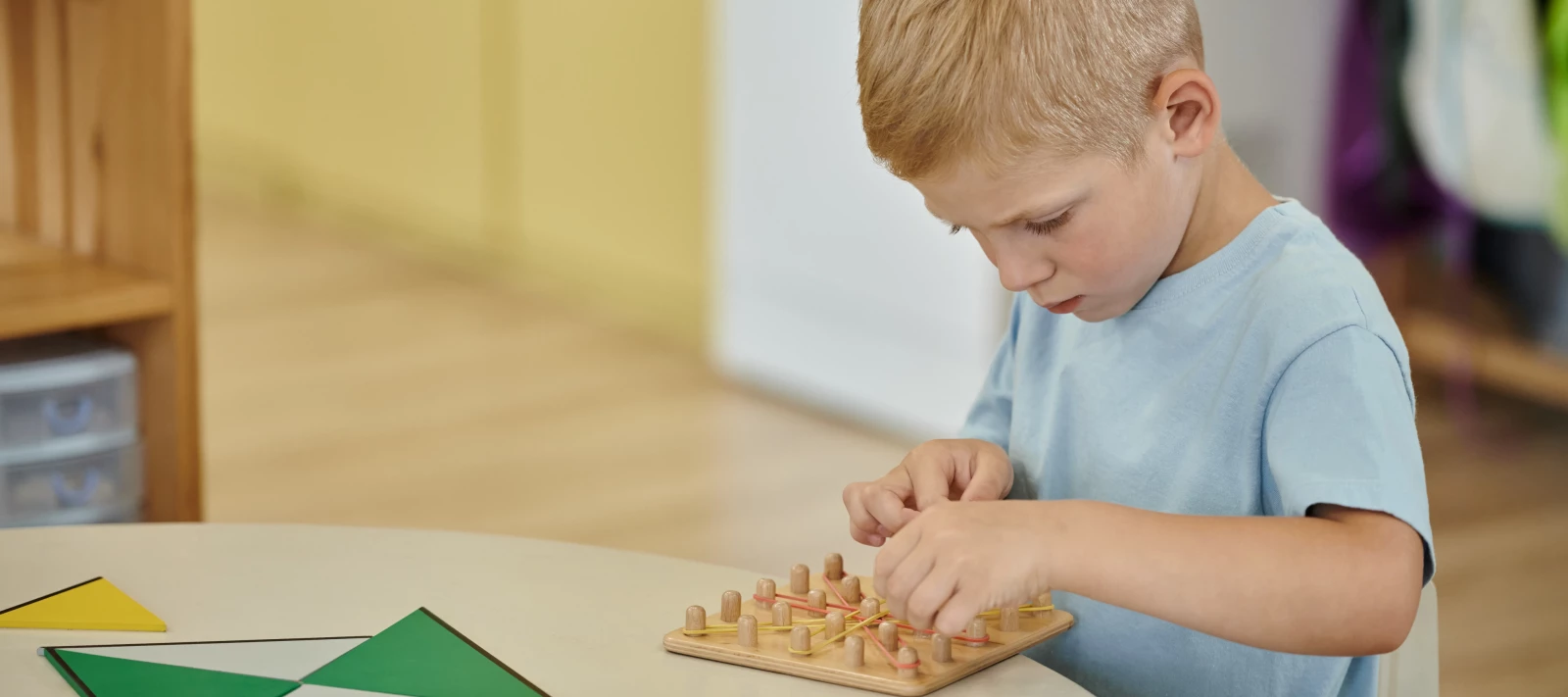Sub total: 0.00 BGN (0.00 €)
Choosing the right children's educational toy can sometimes be a real challenge. The market is saturated with thousands of offers - in different colors, sizes and shapes. But what really matters when choosing? Many of you have probably asked yourself this question when looking for something of value for your child or as a gift.
Parents often wonder what would be most beneficial for their child's development - something that will teach them, entertain them and is safe at the same time. This article in particular is designed to help you navigate through the many options, giving you guidance on how to select entertaining and educational products according to your child's age, skills and interests. To help him grow and develop in the best way for him.
Why is it important to choose toys according to age?
The right educational toy can have a huge impact on a child's development. Each age group has its own specific needs, interests and developmental stages. It should therefore be tailored not only to the child's years, but also to their skills.
When a child is given something that is too complicated or too elementary for his age, he quickly loses interest or feels discouraged. Conversely, a toy that fits right at his level will spark curiosity, joy and a desire to learn. This way, he will know what to do, discover its possibilities completely independently and engage with it for longer. This not only helps concentration but also encourages independent play - key to cognitive and emotional development.
The educational toys you choose, for your children or as a gift, should always:
- Be age-appropriate;
- Match his or her interests and developmental level;
- Support certain skills (fine motor skills, logical thinking, creativity, speech, etc.);
- Be safe and made of quality materials.
How to recognize inappropriate toys?
Sometimes, although beautiful, they can be unworkable or even dangerous for your child. At first glance, a toy may look impressive - bright, singing, glowing or with many features. But not every beautiful-looking toy is appropriate for a child's age and development. One of the main signs that a toy is not suitable is when it is too complex for the age - for example, it requires skills that the child has not yet developed. This leads to rapid discouragement and lack of interest.
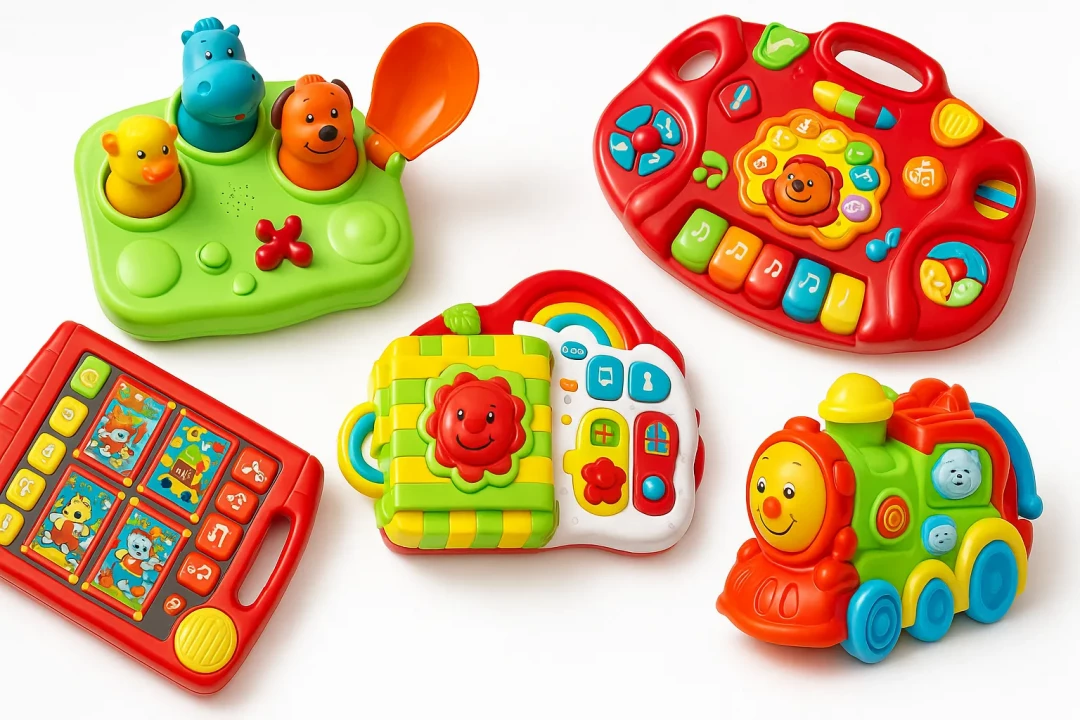
Another clear signal is when it does not encourage active play, but simply emits sounds or lights when a button is pressed - without requiring thinking, coordination or imagination. Such often lead to passive consumption, with no real participation from the child. Parents should therefore take a conscious and critical approach to choice - looking for products that engage the senses, stimulate the mind and support development.
Any toys that contain small, easily detachable parts may also be inappropriate - especially for children under 3 who can easily swallow them. Sharp edges, toxic paints, unstable mechanisms - these are serious safety risks that should not be underestimated.
Criteria for choosing an educational toy
1. Safety
The most important criterion when choosing children's educational toys is safety. Make sure that the product has the necessary certifications to comply with the standards. We recommend that you always choose toys made of natural materials, such as wood, without sharp edges and without small parts that can be swallowed. Paint should be water-based - non-toxic and sustainable.
2. Functionality
A good educational toy should offer more than just fun. It should encourage thinking, fine motor skills, attention and concentration. Toys that require sorting, stacking, turning or logical recognition help a child build important skills. This is especially important at an early age when the brain is developing the fastest.
3. Multifunctionality
Children quickly lose interest in uniform objects. Therefore, toys that offer different ways to play - for example, a Busy board with multiple mechanisms - are much more useful. They stimulate the child to look for new approaches and use his imagination. In this way, a toy is not limited to one function, but remains interesting for a long period of time.
Age-appropriate educational toys
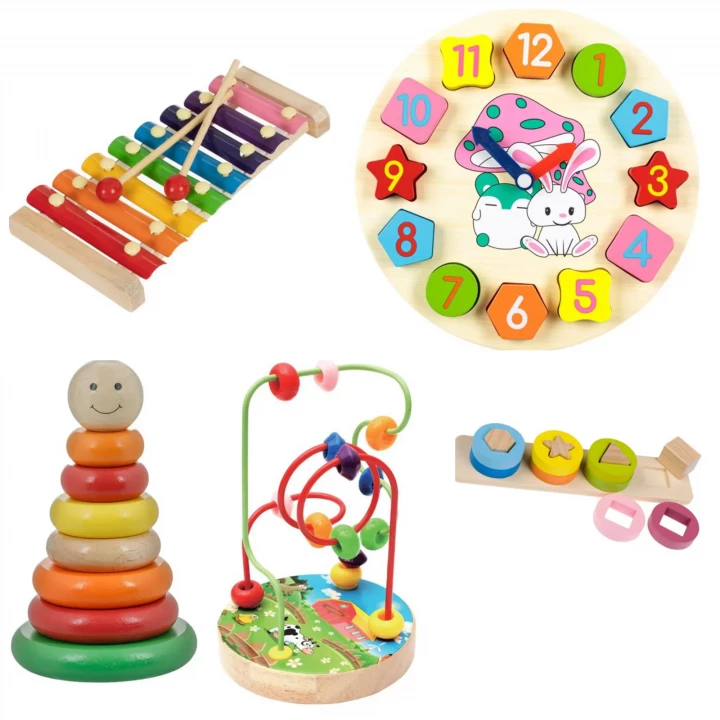
As we said earlier, each age group has its own developmental peculiarities - so the choice of educational toys especially in the 1-3 years age group is essential. If you want to learn more about this critical period of development and which are the most appropriate toys and activities for it, check out our detailed article. In it you will find valuable tips, examples and guidelines for choosing activities tailored to your child's developmental stage.
Educational toys for baby (0-12 months)
In the first year of life, children discover the world through their senses. Therefore, educational toys for a baby should focus on visual, auditory and tactile stimulation.
- Soft books with textures - different fabrics and contrasting colors help visual perception and stimulate touch;
- Rattles and pretzels - encourage grasping, fine motor skills, muscle tone in the hands and sound tracking;
- Teething toys made of soft materials such as silicone - soothe gums and provide a safe object to explore with the mouth;
- Toys to grasp and push - such as balls with different surfaces or small soft cubes that develop coordination.
Educational toys for 1 year old child
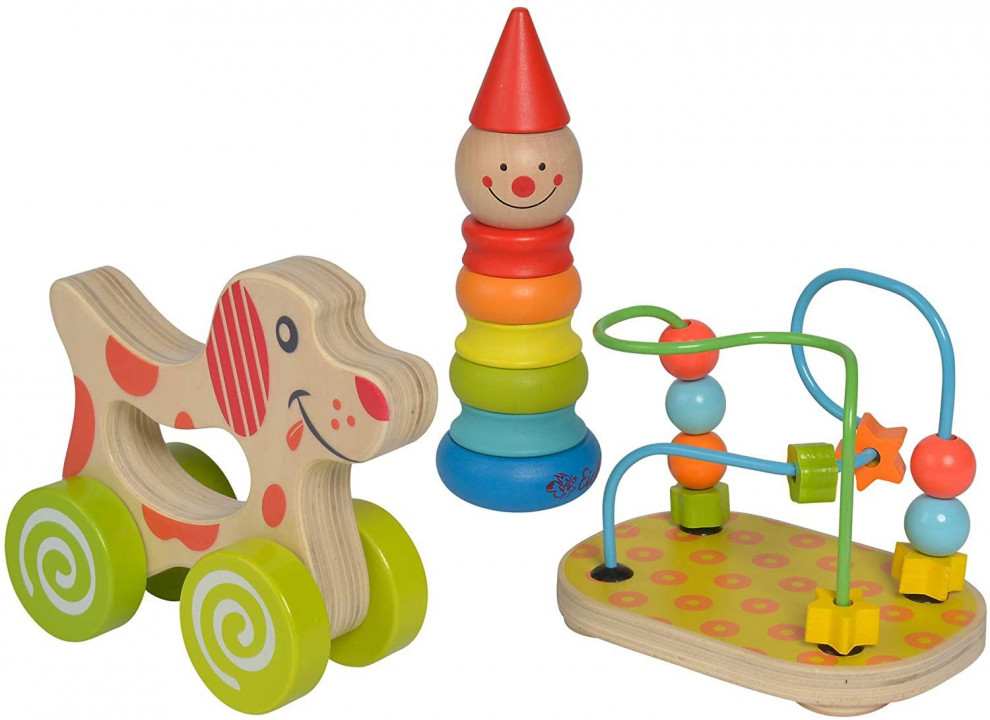
At this age, children begin to move actively, try to solve simple problems and show the first signs of independence. Appropriate educational toys for a 1 year old child encourage manipulation, concentration and understanding of cause and effect relationships.
- Busy board - a classic educational toy based on the Montessori method. It incorporates a variety of mechanisms: latches, knobs, zippers, gears and more that engage fine motor skills;
- Geometric Shape Sorters - boxes into which objects are inserted according to shape or color. They teach logic and coordination;
- Stringing and stacking kits - such as pyramids with rings or wooden beads that encourage precision, consistency and patience;
- Stacking cubes - support spatial thinking and teach the child balance.
Educational toys for children 2 to 3 years
- Wooden puzzles - with large and bright pieces, easy to grasp and take out. They develop logical thinking and patience;
- Sorting games by colour, shape and size - support categorisation;
- Games with scale models of real objects and settings - e.g. kitchen sets, tools, farms, etc.
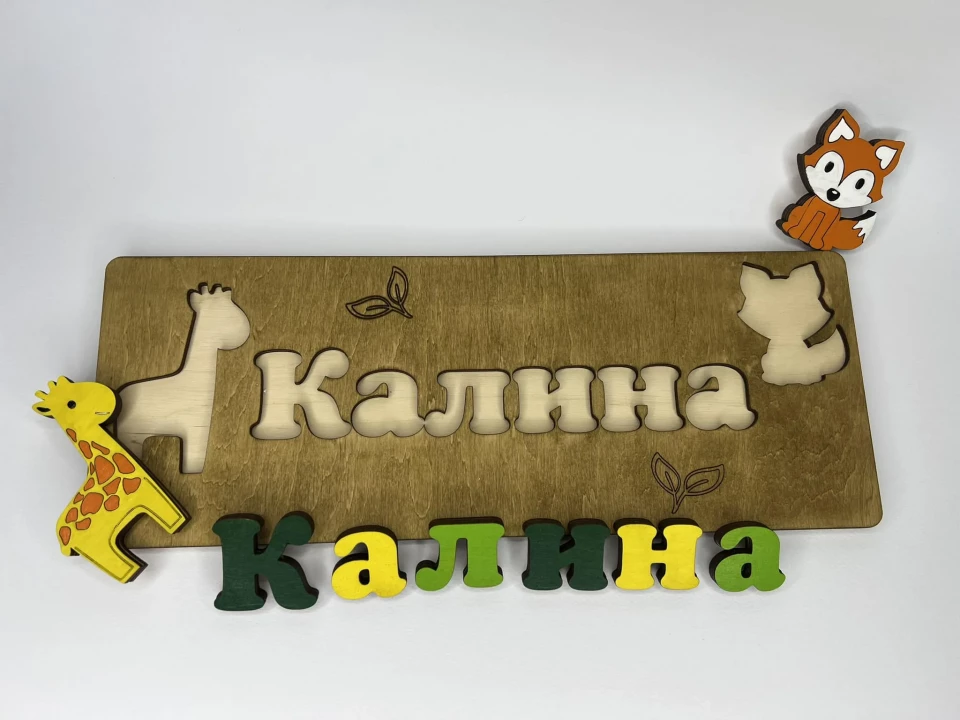
Advantages of Montessori toys
Montessori educational toys are designed to encourage independence, a desire for discovery and natural learning through play. They are usually made of natural materials, minimalist and focused on one skill - for example, stringing, sorting or unlocking. Choose ones that offer a clear beginning and end as well as a logical sequence - this gives the child a sense of success and accomplishment.
The choice of children's educational toys should not be dictated by looks or fashion alone. The best toys are those that support development, engage attention and create the joy of discovery. Keep an eye on age stages, invest in quality educational toys and trust proven brands that put children's safety and development first.



